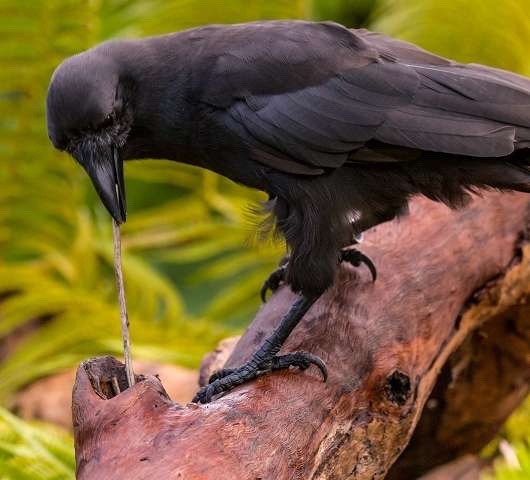
a photo of a captive hawaiian crow using a stick as a tool to access food. crows are renowned for their intelligence and tool use, and have been known to create different tool shapes for different situations.
(x)

a photo of a captive hawaiian crow using a stick as a tool to access food. crows are renowned for their intelligence and tool use, and have been known to create different tool shapes for different situations.
(x)
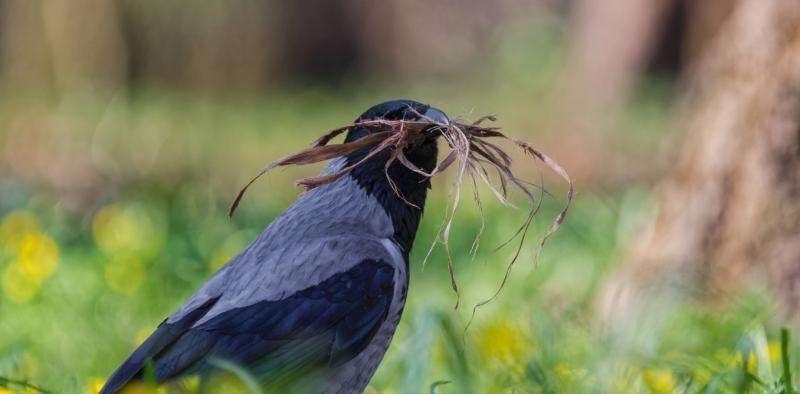
researchers found that ravens are capable of planning for the future. while they exhibit some of this behavior in the wild, such as storing food, more complex examples were found during testing. ravens were able to store a tool for accessing food and retrieve it later when presented with opportunity to use it, and also understood the value of saving a token that could be exchanged at a later time for food.
(x)
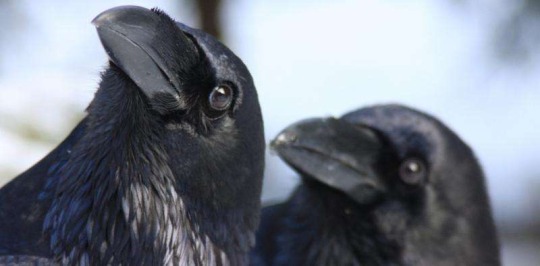
crows and ravens have demostrated a knowledge of ‘fairness’ – and demand equal treatment. researchers did an ‘inequity test’ on the birds. some birds received cheese, a high value treat, and others received a piece of grape, which was not desirable. those who received the grape started refusing to accept it. the researchers then performed an ‘effort control’ test. some birds were given a piece of cheese with nothing required of them. other birds could choose from cheese or a grape – but had to exchange a token for them. again, the birds that were being treated unfairly refused to cooperate.
(x)
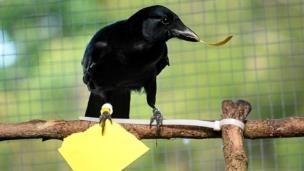
researchers created a small ‘vending machine’ for crows, accompanied with small slips of paper that could be used to operate the machine. the crows quickly figured out how to use the machine. next, the crows were given papers that were the incorrect size. the crows fashioned them into the right size for the machine. it was predicted this would happen – in the wild, crows have been observed on many occasions using tools they fashion themselves to get what they want.
(x)
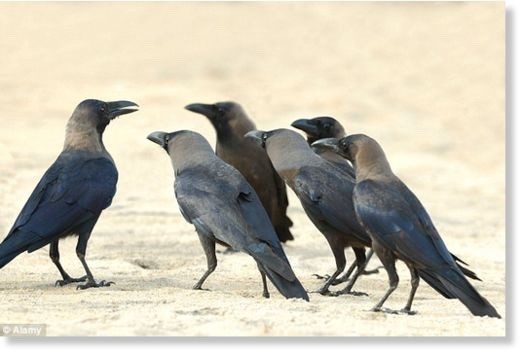
crows have been documented holding ‘funerals’ for many years. however, researchers suggest that they may not be mourning; evidence indicates that crows may be examining the body & surrounding area for potential threats to the rest of the flock.
source: (x)

it’s well known that seagulls, crows, ibises, and other birds feed on scraps at landfills with an increasing lack of natural food sources. some birding organizations even host birding tours at landfills due to the variety of species. but scientists have found this diet may be harming the birds. 40+ seagulls’ stomachs were analyzed, and 80% of the birds’ stomachs contained debris such as plastic, glass, and metal.
source: (x)
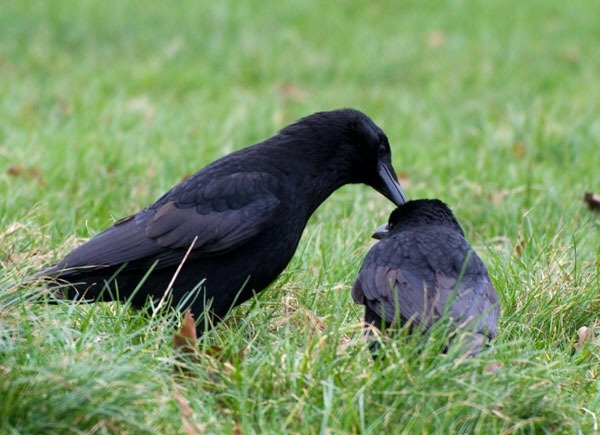
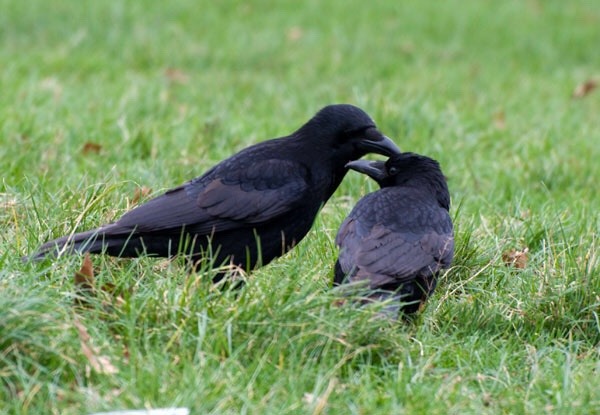
a crow preens another (presumably its mate). while crows have a reputation as foreboding and unloving, they are very devoted to their mates and flock members and frequently engage in displays of affection like this.
source: (x)
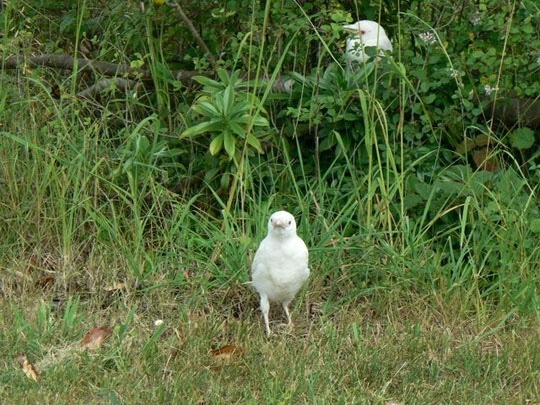

these albino crow fledglings were spotted in canada. while small white patches on crows are somewhat common, true albinism is rare. it’s rarer still that the birds make it to adulthood – their plumage puts them at a risk for predation, and gives them a likelihood of becoming outcasts in the flock.
source: (x)
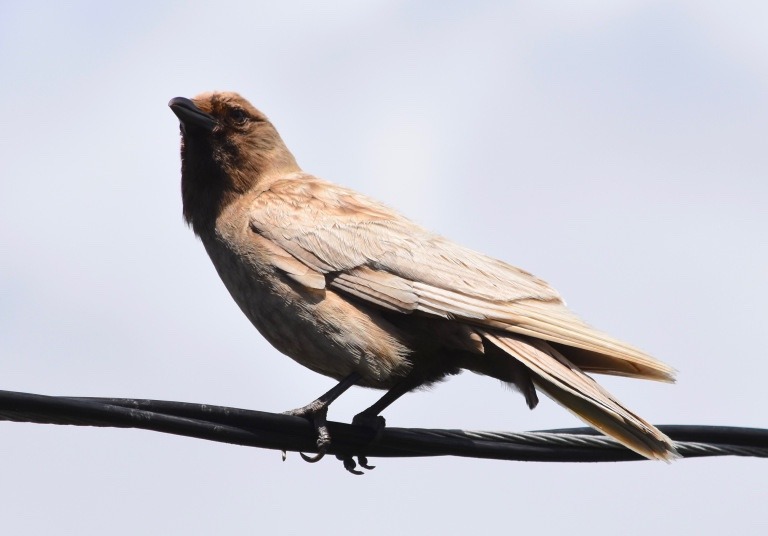

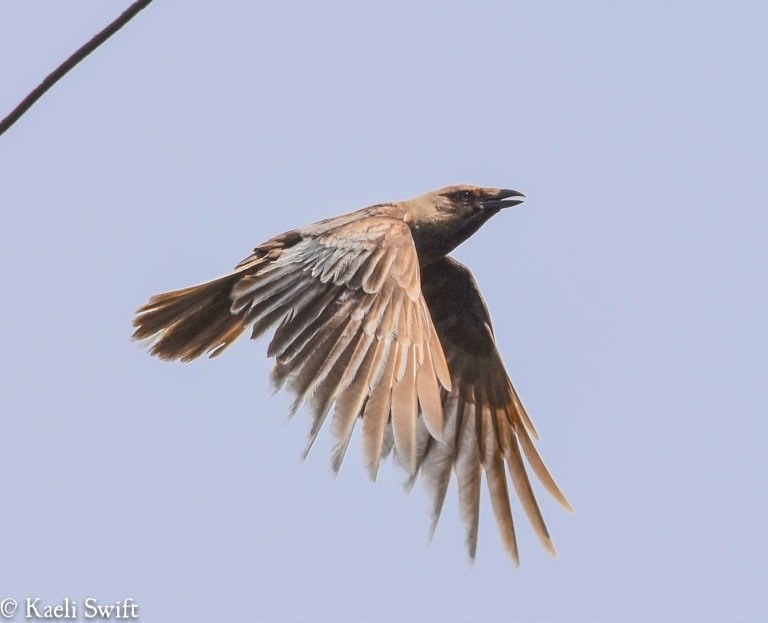
this unusually brown crow is what is sometimes referred to as a “caramel” crow. it’s not certain what the cause of the abnormal plumage is, as none of these crows have ever been examined by researchers; however, plausible theories include crows affected by leucism (a lack of pigment) or crows with a rare ‘brown’ color mutation.
source: (x)
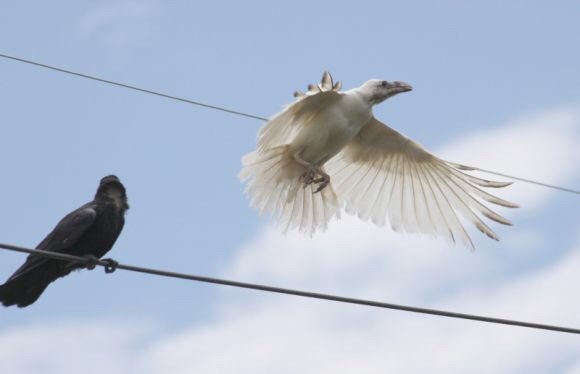
this white large-billed crow was spotted in shimane, japan. crows with such drastic variations in color aren’t entirely uncommon, and have been seen not only in japan but in different crow species all over the world. it’s likely this bird’s color results from leucism, a genetic mutation that causes a decrease in melanin and other pigments.
source: (x)